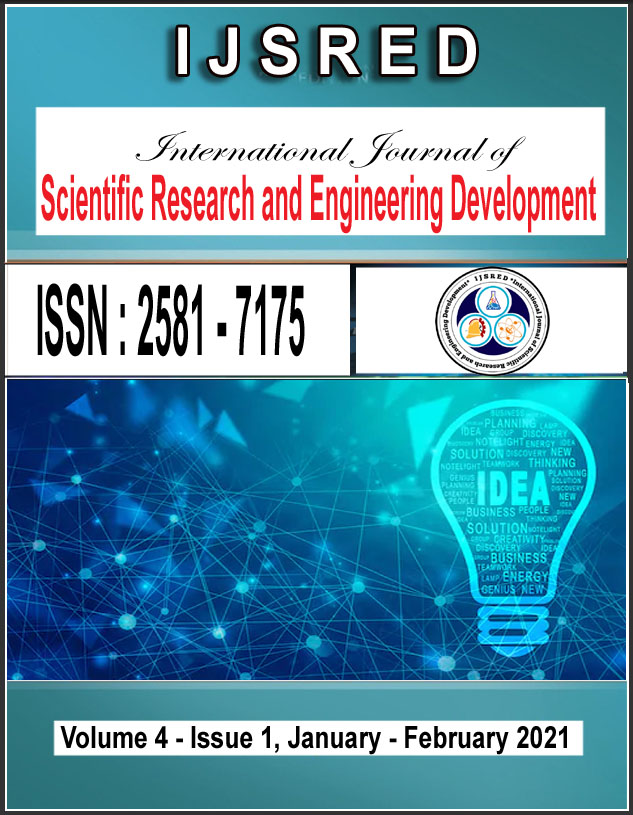 |
International Journal of Scientific Research and Engineering Development( International Peer Reviewed Open Access Journal ) ISSN [ Online ] : 2581 - 7175 |

Treatment Of Textile Effluent Containing Reactive Black 5 Dye Using Advanced Oxidation
 |
International Journal of Scientific Research and Engineering Development (IJSRED) | |
| Published Issue : Volume-4 Issue-1 | ||
| Year of Publication : 2021 | ||
| Unique Identification Number : IJSRED-V4I1P5 | ||
| Authors : Aruna Deshapriya Hewamadduma, Weerasinghe, T.K | ||
Abstract :
Wastewaters originated from textile industry contain various pollutants including a high content of organic matter and color problem depending on forms of dyes, surface-active materials. Azo dyes are difficult to degrade by the current conventional treatment processes. They are characterized by the presence of the nitrogen-nitrogen bond (-N=N-) in the center and hence they are highly electron deficient. Several biological, chemical methods for degradation of textile effluents are being followed, but real challenge is to find a method that is effective, comparatively fast and cost effective. Advanced oxidation is an emerging field that uses oxidants producing hydroxyl radicals to oxidize toxic compounds into non-harmful by-products.The effectiveness of photo-oxidation on reactive black 5, a widely used complex structured azo dye, was evaluated. Dye concentrations in the range of 50-500mg/L were treated with UV alone and H2O2 /UV under 12 different residence time (5.2-60 min). The best combination was selected for Chemical Oxygen Demand (COD) analysis to determine the amount of chemicals retained in the effluent after treatment. The textile industry produces effluents with a pH of 10-11 and hence, the dye pH was adjusted to 10-11.The effects of UV radiation, UV/ 10 ml H2O2 and UV/ 20 ml H2O2 were evaluated and the results were compared to select the best oxidation method. The maximum degradation obtained after 60 min exposure to UV alone was 27.01% and 0.33% for 50 mg/L dye concentration and 500 mg/L dye concentration, respectively.The degradation obtained after exposure to UV/10 ml/L H2O2 was 99.70% after 25.4 min for the 50 mg/L concentration and 99.70% after 60 min for the 500 mg/L concentration. Exposure to UV/ 20 ml/L H2O2 resulted in the degradation of 99.96% after 20 min for the 50 mg/L dye concentration and 99.95% degradation after 60 min for the 500 mg/L dye concentration. Increasing the H2O2 from 10 mg/L to 20 mg/L, (UV/20 ml/L H2O2) improved the oxidation efficiency and reduced the treatment time.The Chemical Oxygen Demand (COD) analysis performed on UV/20 ml/L H2O2 treated samples showed the COD of the effluent (after treatment) was 416 mg/L after 20 min for the 50 mg/L dye concentration and 256 mg/L after 60 min for the 500 mg/L dye concentrations which are higher than the COD discharge limit of 250 mg/L. The COD discharge limit of 250 mg/L could be achieved with UV/ 20 ml/L treatment by increasing the exposure time (longer than 60 min). The pH of the treated effluent is within the discharge-accepted limit of 6-9. Treatment of the dye effluent under alkaline condition was slower but it does not justify at the acidic condition due to the cost of chemicals addition to adjust the pH and the further treatment to remove the chemicals before disposal. The temperature after treatment was always found to be increased from 22ᵒC to 41ᵒC after 60 min of exposure to UV.
